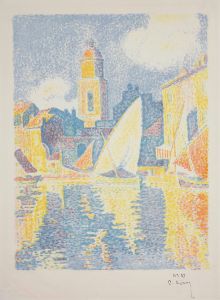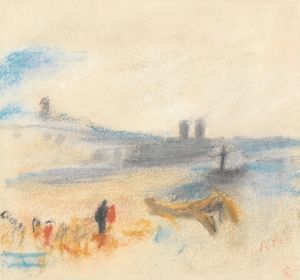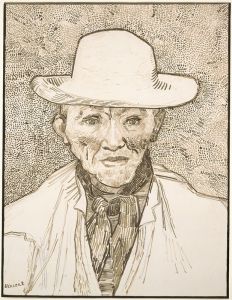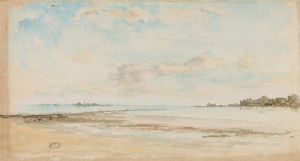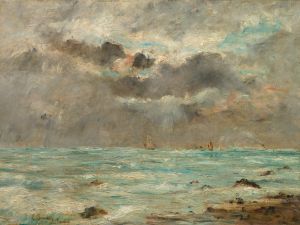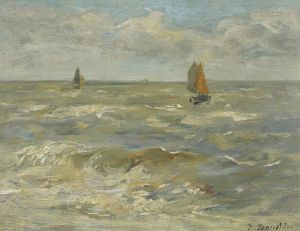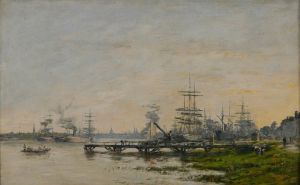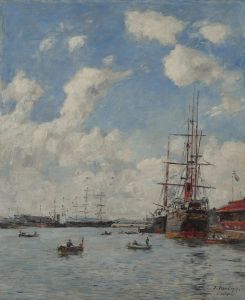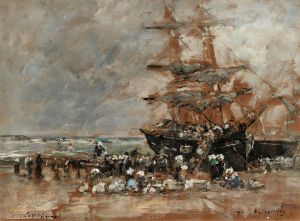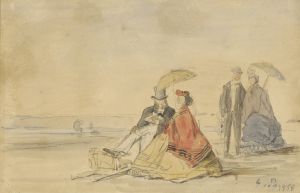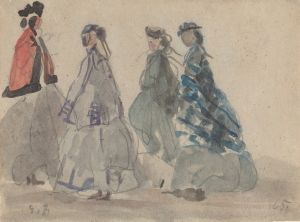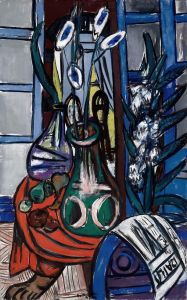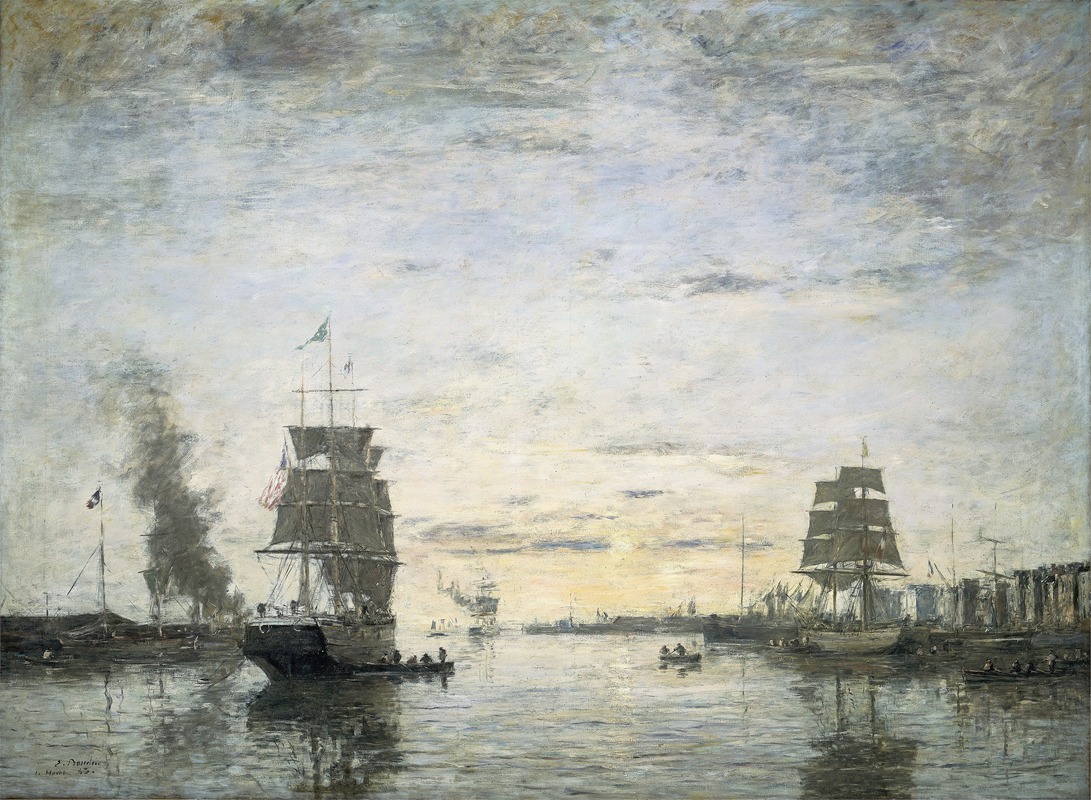
Entrance to the Harbor,Le Havre
A hand-painted replica of Eugène Boudin’s masterpiece Entrance to the Harbor,Le Havre, meticulously crafted by professional artists to capture the true essence of the original. Each piece is created with museum-quality canvas and rare mineral pigments, carefully painted by experienced artists with delicate brushstrokes and rich, layered colors to perfectly recreate the texture of the original artwork. Unlike machine-printed reproductions, this hand-painted version brings the painting to life, infused with the artist’s emotions and skill in every stroke. Whether for personal collection or home decoration, it instantly elevates the artistic atmosphere of any space.
Eugène Boudin's painting Entrance to the Harbor, Le Havre is a work by the French artist who is widely regarded as one of the precursors of Impressionism. Boudin, born in 1824 in Honfleur, Normandy, was known for his depictions of coastal scenes, harbors, and skies, often capturing the interplay of light and atmosphere. His works frequently focused on the maritime life of northern France, particularly in towns like Le Havre, where he spent a significant portion of his career.
This painting, as the title suggests, depicts the entrance to the harbor in Le Havre, a bustling port city in Normandy. Le Havre was an important location for Boudin, both personally and artistically. The city’s dynamic harbor, with its constant activity of ships, boats, and changing weather, provided him with endless inspiration. In this work, Boudin captures the essence of the harbor with his characteristic attention to light, water, and sky.
Boudin was celebrated for his ability to render atmospheric effects, and Entrance to the Harbor, Le Havre exemplifies this skill. The painting likely features his signature loose brushwork and subtle color palette, which he used to convey the transient qualities of light and weather. His focus on naturalistic depictions of skies and water earned him the admiration of contemporaries, including Claude Monet, who considered Boudin a mentor.
The exact date of the painting is not specified, but it is consistent with Boudin's broader body of work, which often explored similar themes throughout his career. His paintings of Le Havre and other coastal scenes were part of a larger movement in 19th-century French art that sought to capture modern life and the natural world with immediacy and authenticity.
Entrance to the Harbor, Le Havre reflects Boudin's dedication to plein air painting, a practice that involved working outdoors to directly observe and depict the landscape. This approach was influential in the development of Impressionism, and Boudin's works are often seen as bridging the gap between the Barbizon School and the Impressionists.
Today, Boudin's works, including his harbor scenes, are celebrated for their pioneering role in modern art. His paintings can be found in major museums and collections around the world, though specific details about the current location of Entrance to the Harbor, Le Havre are not provided in available records.





